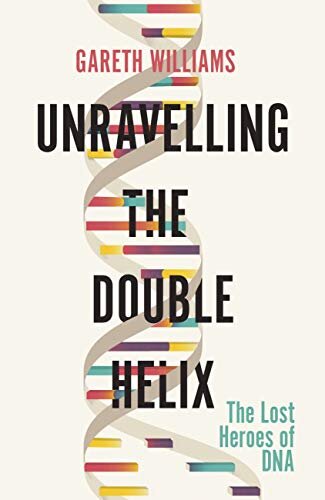Unravelling the Double Helix by Gareth Williams
/Unravelling the Double Helix: The Story of DNA
By Gareth Williams
Pegasus Books, 2019
Emeritus Professor and former University of Bristol Dean of Medicine Gareth Williams begins his big new book Unravelling the Double Helix: The Story of DNA with a gamely muted apology for having written yet another book about the long and complicated history of the “discovery” DNA. The gesture is understandable, since there’s been no shortage of such books in the last 20 years, but it’s hardly warranted: this book is anything but derivative.
Williams of course knows a vast amount about DNA and the dozens of geniuses, from Gregor Mendel on down, who contributed to our understanding of the very stuff of life itself. And more, Williams knows that most of his readers don’t know much more about this story than perhaps the fact that James Watson and Francis Crick discovered the double helix structure of DNA in 1953.
There’s much, much more to the story than Watson and Crick, and Williams fleshes out that story not only with clear explanations of the science involved but also with a broad, colorful gallery of personalities. As readers of Williams’ gripping 2010 book Angel of Death: The Story of Smallpox will remember, this author has a dramatist’s ear for crafting sharp, memorable personality profiles. About JD Bernal, for instance, the crystallography genius who took the world’s first X-ray photograph of a crystalline protein, after relating the Cambridge don quip about him (“No one with hair like that can be sound”), Williams writes:
Bernal’s personal life (‘private’ would have been inaccurate) was more colourful than just ‘purple’. His relationship with the opposite sex as notably asymmetrical (there was only one of him, and many of them) and his wife had to put up with the fact that he could only be ‘faithful in his way’. At the same time, Francis Crick described him as ‘the only genius I ever met with consideration for the feelings of others.’
Or the formidable pioneering biochemist Erwin Chargaff, originator of the so-called “Chargaff’s Rules” about the ‘mathematical regularities’ in the bases of DNA, during his first testy meeting with Watson and Crick at Cambridge in 1952:
The encounter went badly. Chargaff began by ribbing Watson about his long, un-American hair and peculiar semi-Anglicised accent. Crick then weighed in with an account of Griffith’s finding that each base had a specific partner, only for Chargaff to demand if Crick had read his papers. Which papers? Crick wanted to know. Chargaff told him about the matching base compositions, which had an ‘electric’ effect on Crick. Unfortunately, Crick then sank himself irretrievably by not being able to remember the differences between the four bases, let alone which ones Griffith had identified as being mutually attractive.
The result of 500 pages of this kind of evocative, personality-driven drama is a far more involving and engrossingly readable account of DNA’s story than anything bookstores have seen since Siddhartha Mukherjee’s 2016 book The Gene. No apologies necessary for that.
Steve Donoghue is a founding editor of Open Letters Monthly. His book criticism has appeared in The Boston Globe, The Wall Street Journal, The Historical Novel Society, and The American Conservative. He writes regularly for The National, The Washington Post, The Vineyard Gazette, and The Christian Science Monitor. His website is http://www.stevedonoghue.com.
